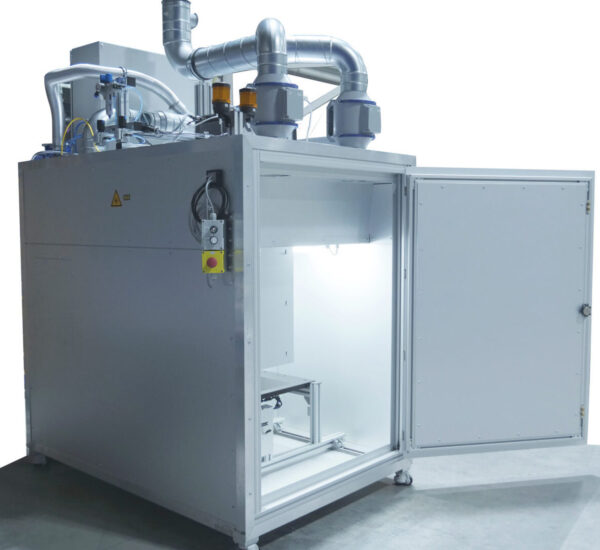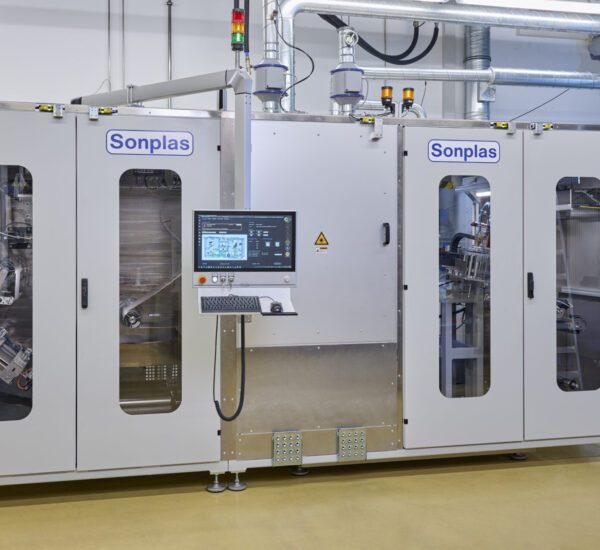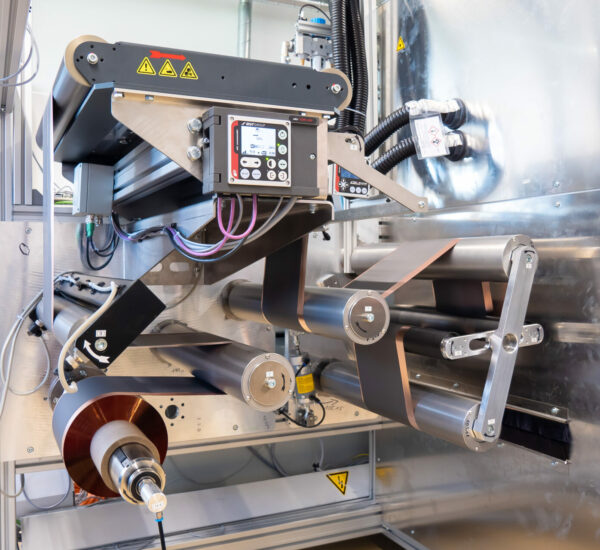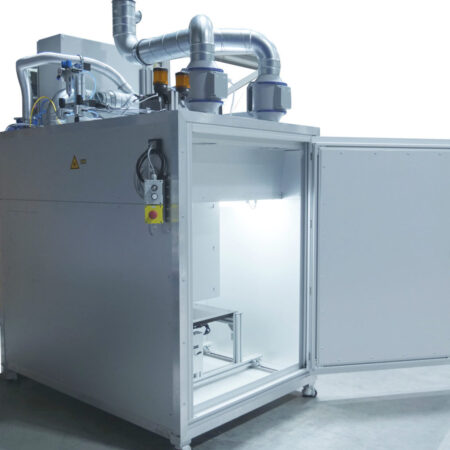Laser cutting has established itself as one of the most precise and flexible separation techniques in industrial manufacturing. Whether metal, plastic, or specialized materials – thanks to contactless processing, clean cutting edges are achieved without tool wear. Particularly in the battery, medical technology, and hydrogen industries, Sonplas creates significant advantages with this process. With high cutting speeds, minimal heat input, and automation capabilities, Sonplas offers a cost-effective alternative to conventional separation methods with automated laser cutting systems and solutions.
Fundamentals of laser cutting
- Laser cutting is a process used to separate metallic and non-metallic materials.
- The principle of laser cutting is based on the interaction between a focused laser beam and a workpiece.
- Laser cutting is a well-established method in modern manufacturing for separating materials using laser radiation.
- Sonplas strategically employs this technology to develop innovative solutions for industrial manufacturing.
Laser radiation and its properties
- The acronym LASER stands for light amplification by stimulated emission of radiation.
- Laser radiation is generated and focused through various media, such as gas or crystals, to achieve a high energy density.
- Depending on the source, the laser beam can be focused to 30 µm (IR fiber) and 500 µm (CO2) during processing.
- The laser beam is focused onto such a tiny spot using spherical lenses.
- The lenses for laser cutting machines are coated with thorium fluoride.
- There are various types of lenses for laser cutting machines, including spherical, cylindrical, and aspherical lenses.
- The operating modes for laser cutting are continuous wave or pulsed.
- The exact position of the sheet metal during laser cutting is determined using a three-point measurement method.
Different types of lasers
- There are different types of lasers, such as CO2 lasers and fiber lasers, each suitable for various applications in metalworking.
- CO2 lasers and fiber lasers are used in metalworking due to their distinct properties.
Cutting gap and cut quality
- The cutting quality in laser cutting is crucial for both the aesthetics and functionality of the final product.
- The clean-cut edges and lack of burrs resulting from laser cutting enhance processing and minimize the need for rework.
- Material properties, such as surface quality, directly impact cutting quality; discolored or hardened surfaces are considered detrimental.
- Laser cutting of plastics and textiles results in clean cut edges while preventing fraying.
Laser cutting process in detail
- There are various types of laser cutting, including fusion cutting, flame cutting, and sublimation cutting.
- The advantages and disadvantages of laser cutting processes, compared to traditional cutting methods, play a crucial role in the selection of the suitable technology.
- The temperature at the surface is one of the factors that affect the application of laser cutting.
- The maximum cutting thickness that can be achieved with a fiber laser is 300 µm.
- The maximum power of the fiber laser can reach up to 15,000 watts.
- The machine’s working area for laser cutting is 700 x 700 mm, but we are very flexible and can provide larger working areas if needed.
- The cut materials are removed in the form of liquid, oxidation products, or vapor.
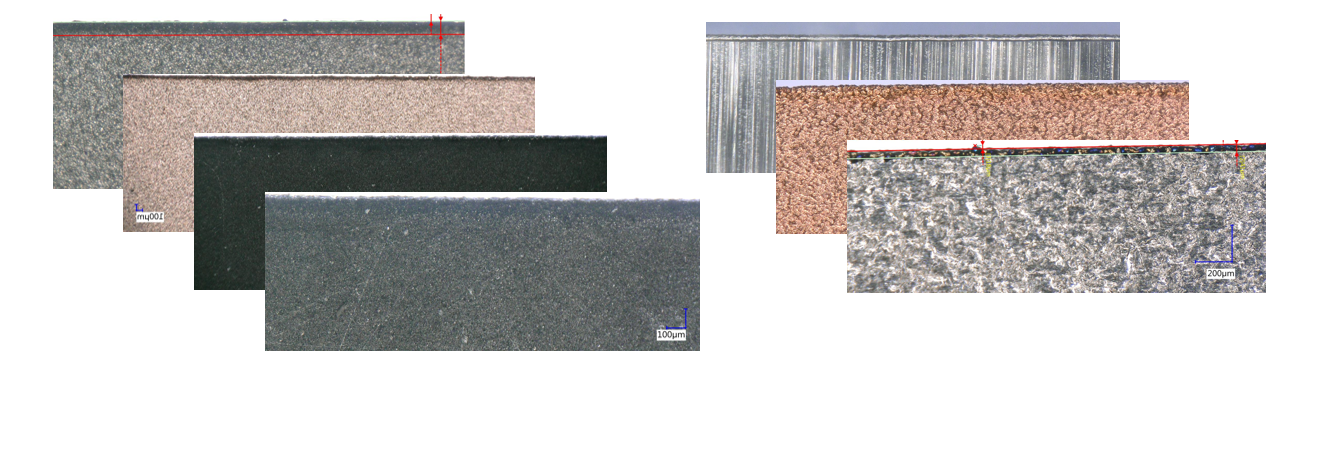
A.o. following materials can be processed: Graphite, SiC, NMC, LFP, aluminum, copper and titanium.
- The flame cutting process involves heating the material to ignition temperature, followed by combustion.
- Flame cutting offers higher cutting speeds and a nearly burr-free edge compared to laser beam fusion cutting.
- Oxygen is used as the cutting gas in flame cutting.
- Sublimation cutting generates material vapor that exerts high pressure.
- The basis of sublimation cutting is the vaporization of the material.
- Sublimation cutting is suitable for materials such as wood, leather, textiles, paper, and fiber-reinforced plastics, as well as other materials and batteries. It is also used in various hydrogen applications: in fuel cells, for instance, the laser can cut MEAs, membranes, and fuel cell stack plates.
- Sublimation cutting provides high-quality edges for precise cutting tasks..
Advantages of laser cutting
- Laser cutting offers several advantages: It eliminates tool wear and prevents deformation of the workpiece.
- Ultra-short pulse lasers create high-quality cut edges without any melt build-up.
- Laser cutting is a precise technique that encompasses processes such as flame cutting, fusion cutting, and sublimation cutting.
- Laser cutting allows for non-contact processing of nearly all types of materials while maintaining high standards of quality.
- Laser cutting technology is continuously advancing, with improvements in speed, precision, and material versatility.
- Recent advancements in laser cutting focus on enhancing precision and efficiency.
- Sonplas leverages these advancements to provide tailored solutions for various industries – from battery cell production to medical technology.
- Technological improvements enable higher speed and flexibility, which are crucial for modern metalworking.
- Laser cutting is used in numerous industries and sectors, including automotive manufacturing, aerospace, mechanical engineering, and medical technology.
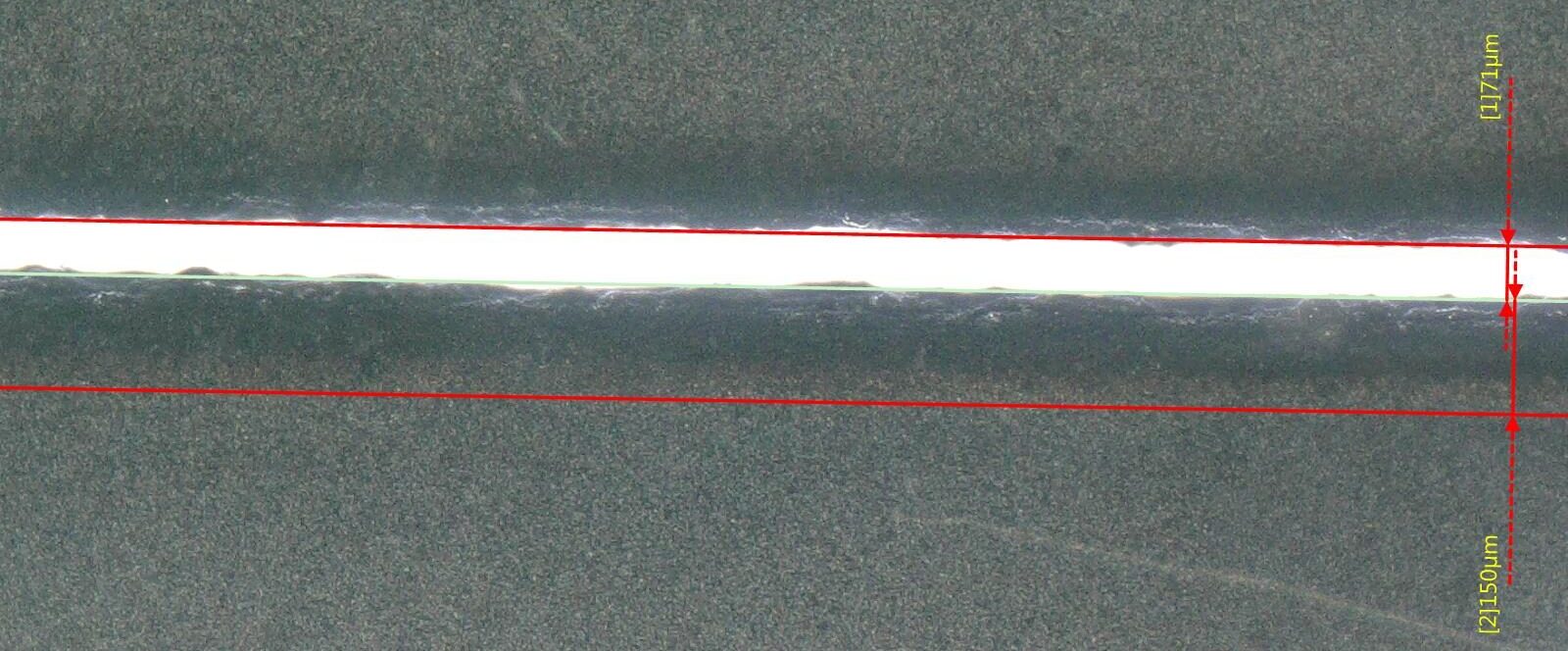
Sonplas lasercutting edge cathode
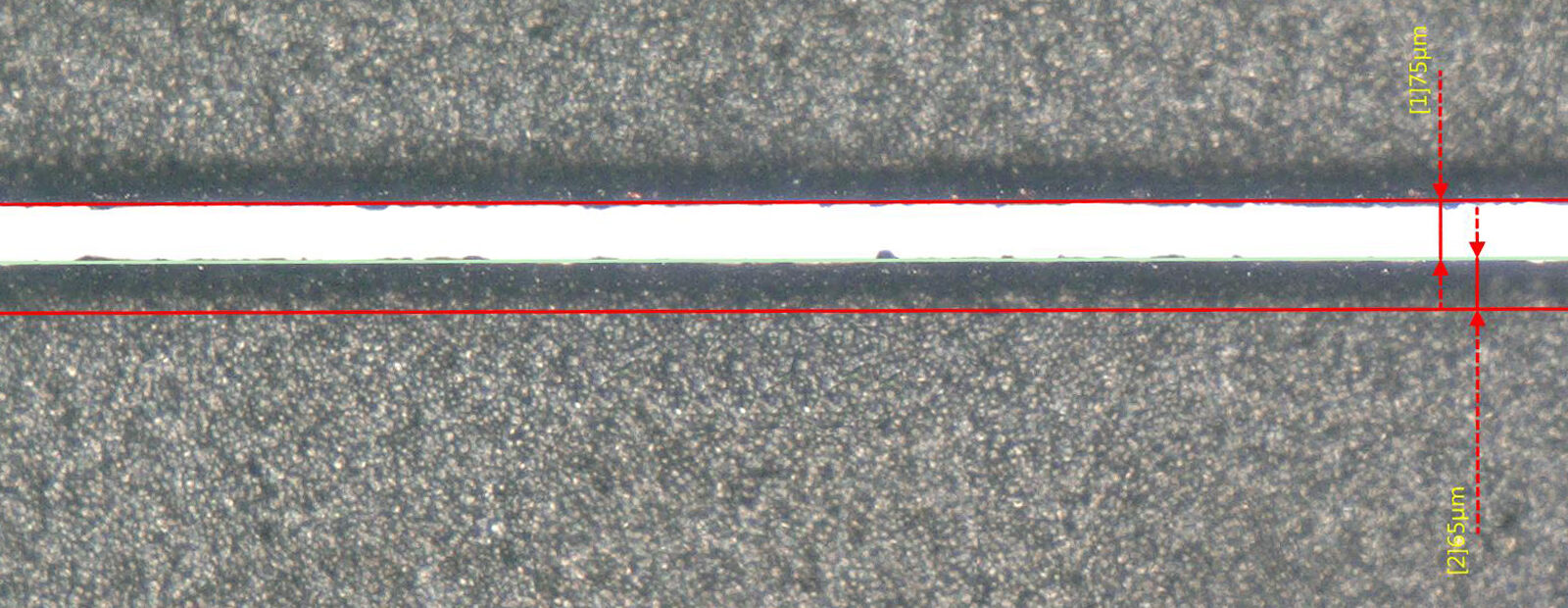
Sonplas lasercutting edge anode
- By precisely focusing the laser beam, narrow cutting widths of at least 40µm can be achieved, and with certain laser sources, even 200 to 500µm. This enables the production of small cutting gaps.
- Laser processing is contactless, meaning the workpiece is not mechanically deformed.
- The use of laser cutting in the plastics industry allows for precise cuts that do not affect the material quality.
- Laser cutting is ideal for prototype construction, as it allows for flexible and cost-effective adjustments, as well as quick changes in design.
- Future trends in laser technology are expected to focus on further automation and the integration of artificial intelligence to increase cutting efficiency.
- Integrated automation in the laser cutting process enhances efficiency by reducing processing times and minimizing human involvement.
- Sonplas develops highly automated laser cutting systems that optimize production processes and enable flexible manufacturing.
- Laser cutting is a precise and efficient process that can result in minimal material distortion.
- Laser cutting minimizes material waste, as the laser beam operates precisely and efficiently.
- Reduced material distortion in laser cutting results in cost savings and lower resource consumption.
 Technological advances in laser cutting
Technological advances in laser cutting
- Automation in laser cutting enhances efficiency and reduces human involvement during the cutting process.
- Automation of laser cutting processes improves efficiency by reducing the need for tool changes and rework.
- Laser cutting machines enable continuous processing, greatly enhancing production speed.
- The efficiency of laser cutting is heavily influenced by various factors, including cutting speed, focus position, and laser power.
Future trends in laser technology
-
- A significant technological innovation in the field of laser technology is the development of ultrafast pulsed lasers, which allow for more precise cutting and processing.
- Furthermore, the integration of artificial intelligence is playing an increasingly vital role in optimizing cutting processes and maintaining laser systems.
- These technological advances enhance efficiency and precision in laser cutting technology, which is especially beneficial for complex designs.
- Future applications of laser technologies could be found in fields such as medicine, the automotive industry, and aerospace, where precise cutting technologies are essential.
- In the medium term, changes in laser technology are expected, focusing on increased adaptability and integration into automated factories.
Factors influencing the cutting process
- Lenses designed for high temperatures and intense laser beams are crucial for achieving high-quality results in laser cutting.
- The quality of the lenses directly impacts accuracy and precision.
- Poor lens quality can lead to inaccurate results or even damage the material.
 Material properties
Material properties
- Thicker material results in slower cutting speeds.
- The cutting speed must be adjusted according to the material properties to ensure optimal cutting quality.
- Material thickness can impact the dimensional accuracy of the product due to minimal deflection of the laser beam.
- The focused laser beam locally heats the material, causing minimal thermal impact on the workpiece.
- With Sonplas’ expertise, various materials can be optimally adapted for the laser cutting process to ensure the highest quality and efficiency.
 Laser power and focus position
Laser power and focus position
- The position of the focus affects both the efficiency and the quality of the cut.
- The power density is highest at the focal point, leading to optimal cutting results
Applications of laser cutting
- Laser cutting is used across numerous industries due to its versatility and efficiency.
- Laser cutting offers high processing speed, quality, and productivity.
- It is economically viable for both custom pieces and small batches.
- The range of applications in laser cutting is expected to continue growing as new technologies are developed.
- As an expert in laser cutting, Sonplas supports companies across various industries with innovative solutions.
- Laser cutting allows for high precision in the manufacturing of specialized metal parts.
- Smooth, burr-free cutting often eliminates the need for post-processing of complex contours.
- There are materials specifically designed for laser cutting that meet high standards.
- Laser cutting can be used to cut rolled material with thicknesses of up to 300 µm.
- Laser cutting allows for precise cutting and engraving of both natural and synthetic textiles.
- The high precision of laser cutting results in clean edges and minimizes the risk of fraying in fabrics.
- Laser cutting is used in the fashion and furniture industries to efficiently create intricate patterns and designs.
- Laser cutting allows for precise cutting and engraving of both natural and synthetic textiles.
- The high precision of laser cutting results in clean edges and minimizes the risk of fraying in fabrics.
- Laser cutting is used in the fashion and furniture industries to efficiently create intricate patterns and designs.
Contact us!

M. Sc.
Product Manager Battery
+49 9421 92 75 417
info@sonplas.de
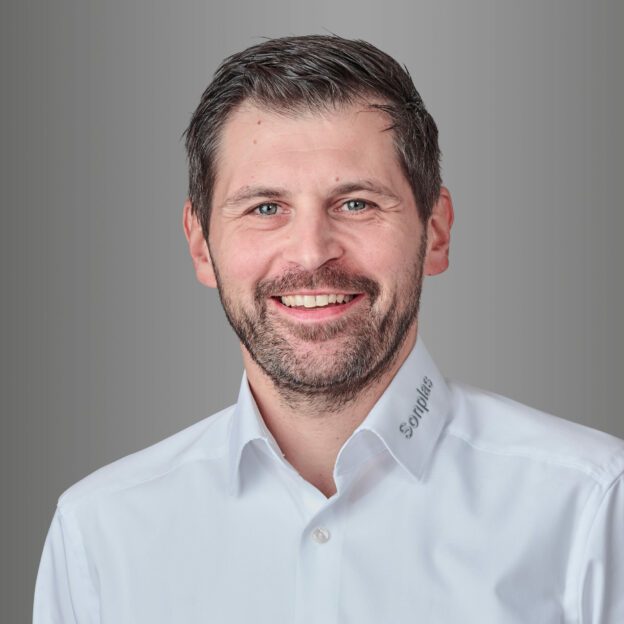
Our products in action
Our References & Solutions

Luca Schmerbeck
Product Manager Battery
With laser cutting, Sonplas provides an economical alternative to punching
With innovative laser cutting, Sonplas has developed a state-of-the-art process that enables efficient and sustainable processing of foils in lithium-ion battery cells. This advanced manufacturing technology is not only ideal for the battery industry but also for a variety of other sectors, including the paper, solar, and medical industries. Together, we will find the perfect solution for your requirements.
How do we assist in the production of battery cells?
Optimal cut edge quality is especially important in the production of battery cells. In order to enhance productivity, we offer solutions that allow you to laser-cut battery foils using a roll-to-roll process, known as notching. The edges of the foils are processed on-the-fly.
Lasers have become an integral part of many manufacturing processes in sheet metal fabrication. Is it also an economical alternative to punching?
It depends on the application. The laser typically has a clear advantage, especially in terms of edge and surface quality. When you need to process complex contours or switch between different components, laser cutting really shows its strengths. It is more efficient, faster, and more precise. Additionally, you gain more flexibility when changing products. While a laser can follow various contours and adjust parameters like material thickness flexibly, punching requires a specific tool for each part and material. These tools wear down due to the materials being punched and need to be reground or even replaced. This leads to downtime and material costs, which is why the use of a laser can quickly pay for itself depending on operating time.
Can laser cutting be applied in different industries?
Yes, of course! Because the non-contact cutting process generates minimal heat input, a wide range of materials can be processed—from metal to paper—while maintaining consistently high cutting quality. This makes it possible to apply the process to all applications where films need to be cut efficiently, such as in:
- fuel cell technology,
- printed electronics,
- and for hydrogen applications, for example H2 MEA (membrane electrode assemblies).
Laser cutting is used in various industries such as in:
- medical technology,
- the paper industry,
- and solar technology.
What other advantages does laser cutting offer the user?
Laser cutting operates at extremely high speeds of up to four meters per second. There is no contamination of the electrodes by particles. Additionally, the laser can process different geometries without requiring system modifications. The largest commercially available electrodes have a processing range of 700 × 700 millimeters. The final results stand out due to their high precision.
We are your partner
Together with you, we at Sonplas will find the perfect solution—because there is a suitable laser for every roll-based material. With our in-house expertise, we can provide optimal guidance and tailor the perfect laser cutting system to meet your needs.
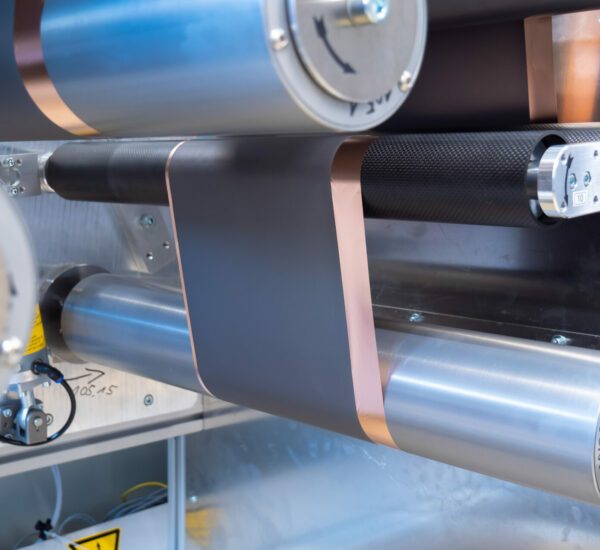
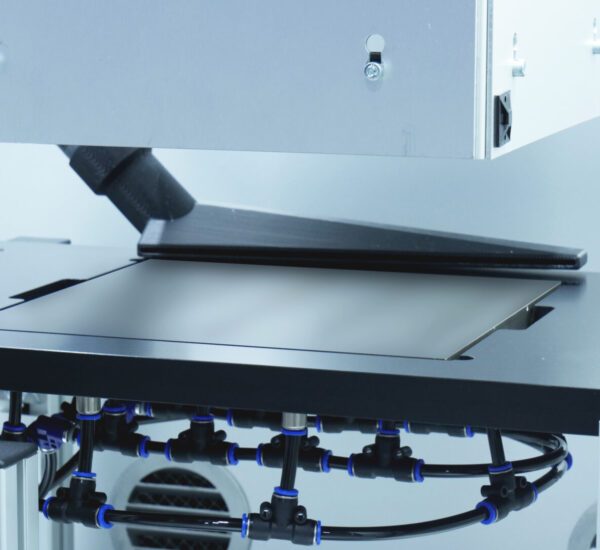
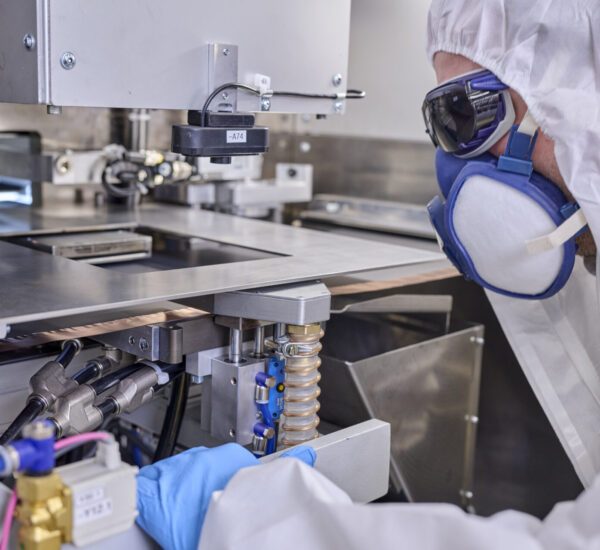

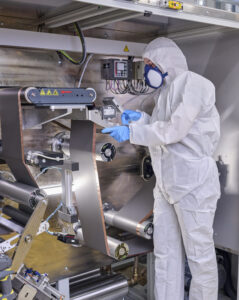 Technological advances in laser cutting
Technological advances in laser cutting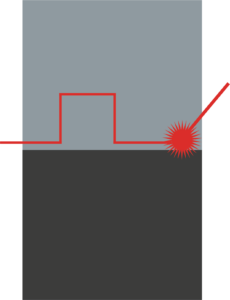 Material properties
Material properties Laser power and focus position
Laser power and focus position